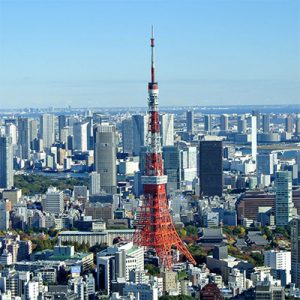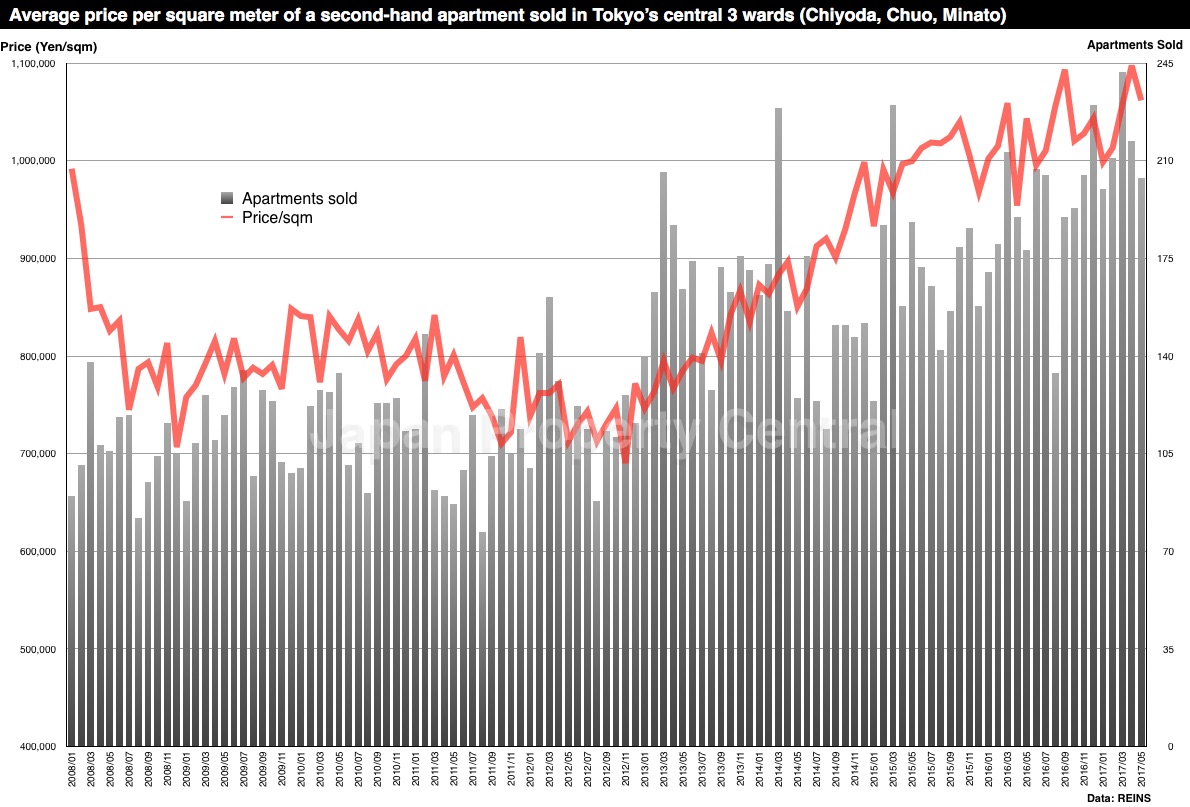Three arrested for fraudulent sale of land in Minamiazabu
 Three men and women have been arrested for the alleged fraudulent sale of a 300 square meter block of land in Tokyo’s upscale Minamiazabu neighbourhood.
Three men and women have been arrested for the alleged fraudulent sale of a 300 square meter block of land in Tokyo’s upscale Minamiazabu neighbourhood.
According to the police department, the suspects forged the identity of the landowner and collected a 240 million Yen (approx. 2.15 million USD) payment from a buyer in early 2014. Depending on the location, a block of land of that size in Minamiazabu could have had a potential market value of 350 million Yen and upwards, and certainly a higher value today.Read more
New apartment supply in Tokyo hits 25 year low in May

According to the Real Estate Economic Institute, 2,603 new apartments were released for sale across greater Tokyo in May, down 5.0% from the previous month and down 13.3% from last year. This is the lowest supply for the month of May seen since 1992 when 1,617 apartments were released for sale.
1,880 apartments were sold, resulting in a contract ratio of 72.2%, up 5.9 points from the previous month and up 1.3 points from last year.
Unsold inventory as at the end of May was 6,422 units, down 227 units from the previous month but up 385 units from May 2016.
The average price of a new apartment across greater Tokyo was 59,810,000 Yen, up 1.1% from the previous month and up 5.1% from last year. The average price per square meter was 861,000 Yen, up 0.6% from the previous month and up 4.6% from last year.
Historic Atami Villa sold to developer

On June 13 Mori Trust announced that they have acquired the historic holiday home of Taneji Yamazaki (1893-1983) in Atami City for an undisclosed price. Yamazaki was a successful businessman, founding several trading companies, including one which is now SMBC Friend Securities. In 1966 he founded the Yamatane Museum of Art in Tokyo, which was the first museum to feature only Japanese paintings.
The Yamatane-ryo was built in 1936. It is located just north of Kinomiya Station and about a 15 minute drive from Atami Station. It is a peaceful hillside neighbourhood with a history dating back over 1300 years. The 8,300 sqm (89,000 sq ft) property has views of Atami Bay, Hashima Island as well as the numerous firework festivals held over the bay throughout the year. Although the purchase price was not made public, similar properties in the Atami area are extremely rare and can fetch upwards of 1 billion Yen (approx. 9 million USD+).Read more
Luxury onsen resort planned for Nikko in 2019

Tobu Railway and real estate developer HULIC have announced plans to open a luxury hot spring resort in Nikko that will cater to wealthy tourists. The tentatively-titled ‘Nikko Fufu’ resort is scheduled to open in 2019 2020.
The 14,000 sqm site is located on Tobu-owned land in the Tomozawa district in Nikko. It adjoins the 40,000 sqm Nikko Tomozawa Imperial Villa and Memorial Park, and is close to the Nikko Tosho-gu Shrine. It was previously part of the Imperial Villa estate and was home to a traditional residence built in the 1910s that was converted to a hotel after WWII. The hotel was demolished in the 1970s and replaced with a newer hotel that was demolished in 2006. The land has sat vacant for the past 10 years.Read more
Top 10 areas in Minato-ku with the highest increase in apartment prices
 Research company Mansion Market has ranked the top 10 addresses in Tokyo’s Minato ward that have seen the highest increase in apartment prices over the past 10 years. Five addresses recorded price increases of over 20%. In top place was Azabu Juban with an average increase in price of 27.1%.Read more
Research company Mansion Market has ranked the top 10 addresses in Tokyo’s Minato ward that have seen the highest increase in apartment prices over the past 10 years. Five addresses recorded price increases of over 20%. In top place was Azabu Juban with an average increase in price of 27.1%.Read more
Tokyo apartment sale prices increase for 56th month in a row

According to REINS, 2,983 second-hand apartments were sold across greater Tokyo in May, down 5.7% from the previous month and down 0.6% from last year. The average sale price was 31,730,000 Yen, down 2.2% from the previous month but up 6.1% from last year. The average price per square meter was 494,900 Yen, down 1.8% from the previous month but up 5.4% from last year. This is the 53rd month in a row to record a year-on-year increase in prices. The average building age was 20.63 years.
In the Tokyo metropolitan area, 1,532 apartments were sold, down 4.8% from the previous month but up 1.9% from last year. The average sale price was 39,330,000 Yen, down 3.7% from the previous month but up 6.4% from last year. The average sale price per square meter was 660,200 Yen, down 2.7% from the previous month but up 5.5% from last year. This is the 56th month in a row to record a year-on-year increase in sale prices. The average building age was 19.46 years.Read more
Construction starts on 32-storey apartment building in Tsukishima
 A 32-storey, 122 meter tall residential building is under construction alongside Tsukishima’s Nishinaka Street in Chuo-ku, Tokyo.
A 32-storey, 122 meter tall residential building is under construction alongside Tsukishima’s Nishinaka Street in Chuo-ku, Tokyo.
The street, which is also known as Monja Street, is famous for being lined with over 70 restaurants serving monjayaki dishes.
The Tsukishima 1 Chome Nishinaka Street District Redevelopment (officially named 'Mid Tower Grand') is a 30 billion Yen project being lead by developers Marubeni, Mitsui Fudosan Residential and Taisei Construction. The building will contain around 500 apartments, as well as retail space and a pachinko parlor. Demolition and construction work began in March 2017 and completion is scheduled for late March 2021.Read more
